Name
Camille Wilson
Job title
Workplace Mental Health Consultant – specialising in peer support programs & lived experience engagement
Organisation
What are you/your organisation currently focusing on in terms of workplace health and wellbeing?
Grow Together Now focuses on bringing employee’s stories to light in a safe and impactful way. Many organisations spend countless hours trying to figure out how to move an employee from thought to action when it comes to spending time on our mental health, and our focus is to do that by enabling this through storytelling campaigns that drive the emotional reason on why.
What aspect of workplace health and wellbeing does your organisation do well in?
My core mission is to provide a voice to lived experience of mental health in the workplace, and this is how my services are defined.
- Keynote talks that are designed to share a personal story of recovery and resilience in a creative and thought-provoking keynote talks that are unique and move away from the norm.
- Support organisations in building frameworks to engage with lived experience of mental health to safely share stories through interviews, campaigns and post-care.
- Support organisations define, develop and deliver their peer support programs with the lived experience of mental health at its heart.
What’s your biggest challenge working in workplace health and wellbeing?
Many organisations think that we can share stories by simply asking someone to open up and put it down on a piece of paper. Storytelling and making emotional shifts isn’t that easy though – it takes a strategy, a thought process, and it requires us to step outside of our comfort zones to be brave and gregarious with stories that we normally leave behind closed doors.
How does WayAhead Workplaces add value to your organisation’s health and wellbeing program?
WayAhead Workplaces provides a place that has so many wonderful people. The opportunities to connect at WW with like-minded individuals is unmatched by any other group that I’ve been to.
How do you deal with stress?
I have many self-care techniques – some smaller things that I can do at home, such as take a bath, drink a tea on the couch, do some deep breathing, but if I am out and about, I have some grounding techniques that I also use.
My favourite one is called the 5 to 1, which is a mindful activity I use when I can feel myself escalating in an emotion – you count 5 things you can see, 5 things you can feel, and 5 things you can hear (you’ve got to close your eyes for the last one…it is hard!), and then you count 4 things you can see, 4 things you can feel, 4 things you can hear…until you reach zero. It is a wonderful grounding technique and helps brings your stress response back to neutral ground.
What are the key issues and considerations for people in workplace health and wellbeing roles?
The biggest challenges we face in workplace health and wellbeing is driving people from thinking about doing something for their health, to actually doing something for their health. In my experience, the only thing that genuinely drives me to action is if I am recommended by someone else, if I have an emotional reason to do it, or if I don’t have a choice. To be able to embed health and wellbeing, we need to be able to create these for our employees – and given we want to avoid individuals not having the choice, we need to be able to fuel recommendations through the trust of peer support and give individuals an emotional reason on why through the power of stories.
How do you switch off from work?
This is a quirky one. My partner recently surprised me with this amazingly comfortable camping chair that reclines…if I am feeling stressed or need to switch off after work, I take it onto our back deck, recline it so that I am looking up at the sky, and take some deep breaths while I look at the clouds or stars.
PS. The most important part is to have no phone or devices near me!
What is your best time-saving tip?
Read an email once, and then if I cannot do it straight away, I allocate it a colour (either red for my priority list, green for to do, orange for follow up required, and purple for something I can read in my downtime), and I come back to it in my priority list in terms of what I action first. That way, I stop re-reading all my emails while I procrastinate what to do first!
What do you think the future of work health and wellness programs look like?
There are two components of health and wellness programs.
The first is the wellness program, whereby an organisation offers support initiatives to create wellbeing at work, be that physical, emotional, mental, or financial wellbeing. In this case, many organisations are doing all the right things – we know the components of wellbeing – so, in many cases, they’ve got the ‘what’ correct, but the future of programs is the ‘why’ and the ‘how’.
The second is the culture of a workplace. You can have all the best wellness programs in the world, but that won’t change that a workplace may be toxic, unhealthy and psychologically unsafe. Workplaces need not be afraid of asking employees “How can we do better?” – and then genuinely acting on that feedback in to build psychologically safer places to work.


